
Jules Gabriel Verne was a French novelist, poet, and playwright. His collaboration with the publisher Pierre-Jules Hetzel led to the creation of the Voyages extraordinaires, a series of bestselling adventure novels including Journey to the Center of the Earth (1864), Twenty Thousand Leagues Under the Seas (1870), and Around the World in Eighty Days (1872). His novels, always well documented, are generally set in the second half of the 19th century, taking into account the technological advances of the time.

Twenty Thousand Leagues Under the Seas is a science fiction adventure novel by the French writer Jules Verne. It is often considered a classic within both its genres and world literature.
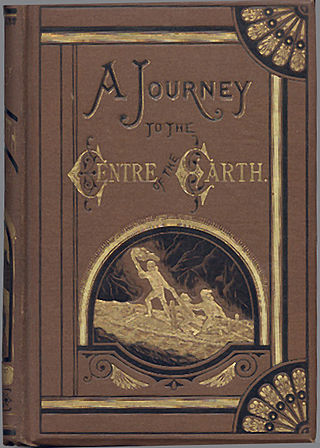
Journey to the Center of the Earth, also translated with the variant titles A Journey to the Centre of the Earth and A Journey into the Interior of the Earth, is a classic science fiction novel by Jules Verne. It was first published in French in 1864, then reissued in 1867 in a revised and expanded edition. Professor Otto Lidenbrock is the tale's central figure, an eccentric German scientist who believes there are volcanic tubes that reach to the very center of the earth. He, his nephew Axel, and their Icelandic guide Hans rappel into Iceland's celebrated inactive volcano Snæfellsjökull, then contend with many dangers, including cave-ins, subpolar tornadoes, an underground ocean, and living prehistoric creatures from the Mesozoic and Cenozoic eras. Eventually the three explorers are spewed back to the surface by an active volcano, Stromboli, located in southern Italy.
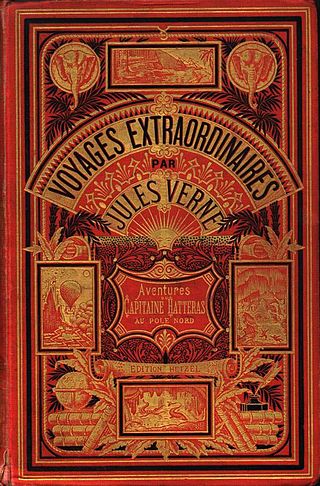
The Voyages extraordinaires is a collection or sequence of novels and short stories by the French writer Jules Verne.

Treak Cliff Cavern is a show cave near Castleton in Derbyshire, England. It is part of the Castleton Site of Special Scientific Interest and one of only two sites where the ornamental mineral Blue John is still excavated. As part of an agreement with English Nature, the Blue John that can be seen in the show cave is not mined but it is extracted in small quantities from other areas of the cave and made into saleable items like bowls, jewellery, and ornaments.

Silver Islet refers to both a small rocky island and a small community located at the tip of the Sibley Peninsula in northwestern Ontario, Canada.
The lost world is a subgenre of the fantasy or science fiction genres that involves the discovery of an unknown Earth civilization. It began as a subgenre of the late-Victorian adventure romance and remains popular into the 21st century.

Two Years' Vacation is an adventure novel by Jules Verne, published in 1888. The story tells of the fortunes of a group of schoolboys stranded on a deserted island in the South Pacific, and of their struggles to overcome adversity. In his preface to the book, Verne explains that his goals were to create a Robinson Crusoe-like environment for children, and to show the world what the intelligence and bravery of a child were capable of when put to the test.

Facing the Flag or For the Flag is an 1896 patriotic novel by Jules Verne. The book is part of the Voyages extraordinaires series.
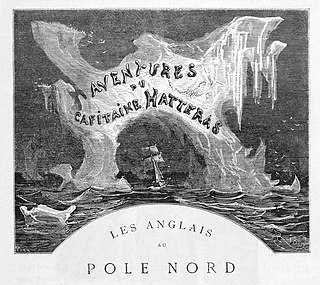
The Adventures of Captain Hatteras is an adventure novel by Jules Verne in two parts: The English at the North Pole and The Desert of Ice.

Jules-Descartes Férat was a French artist and illustrator, famous for his portrayals of factories and their workers.
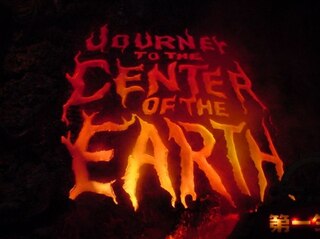
Journey to the Center of the Earth(センター・オブ・ジ・アース) is a slot car dark ride at the Tokyo DisneySea theme park in Urayasu, Chiba, Japan. One of the park's opening day attractions, it is located in the Jules Verne-themed Mysterious Island area of the park, and is loosely themed after Verne's 1864 novel of the same name. The attraction's ride system is based on the high speed slot car system originally created for the Test Track attraction opened in 1999 at Epcot in Walt Disney World. Original music for the ride was created by longtime Disney composer Buddy Baker.
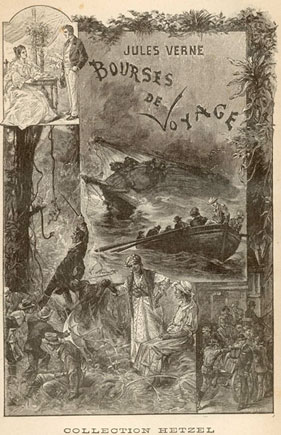
Travel Scholarships is a 1903 adventure novel by Jules Verne.

Blue John is a semi-precious mineral, a rare form of fluorite with bands of a purple-blue or yellowish colour. In the United Kingdom it is found only at Blue John Cavern and Treak Cliff Cavern at Castleton in Derbyshire. During the 19th century, it was mined for its ornamental value, and mining continues on a small scale.
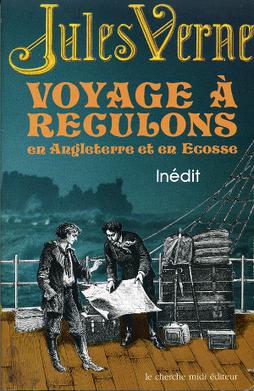
Backwards to Britain is a semi-autobiographical novel by the French writer Jules Verne, written in the fall and winter of 1859–1860 and not published until 1989.

Jules Verne (1828–1905) was a French novelist, poet, and playwright. Most famous for his novel sequence, the Voyages Extraordinaires, Verne also wrote assorted short stories, plays, miscellaneous novels, essays, and poetry. His works are notable for their profound influence on science fiction and on surrealism, their innovative use of modernist literary techniques such as self-reflexivity, and their complex combination of positivist and romantic ideologies.
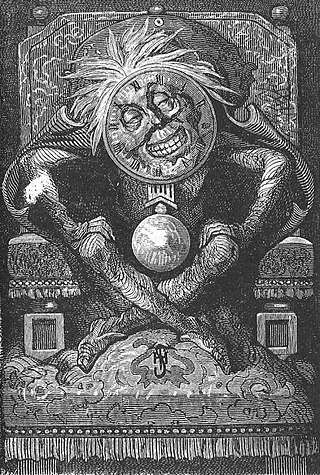
Master Zacharius, or the clockmaker who lost his soul is an 1854 short story by Jules Verne. The story, an intensely Romantic fantasy echoing the works of E. T. A. Hoffmann, is a Faustian tragedy about an inventor whose overpowering pride leads to his downfall.

The Thompson Travel Agency is a 1907 novel attributed to Jules Verne but written by his son Michel Verne.

Jules Verne (1828–1905), the French writer best known for his Voyages extraordinaires series, has had a wide influence in both scientific and literary fields.

The Derbyshire Dome is a geological formation across mid-Derbyshire in England.



















